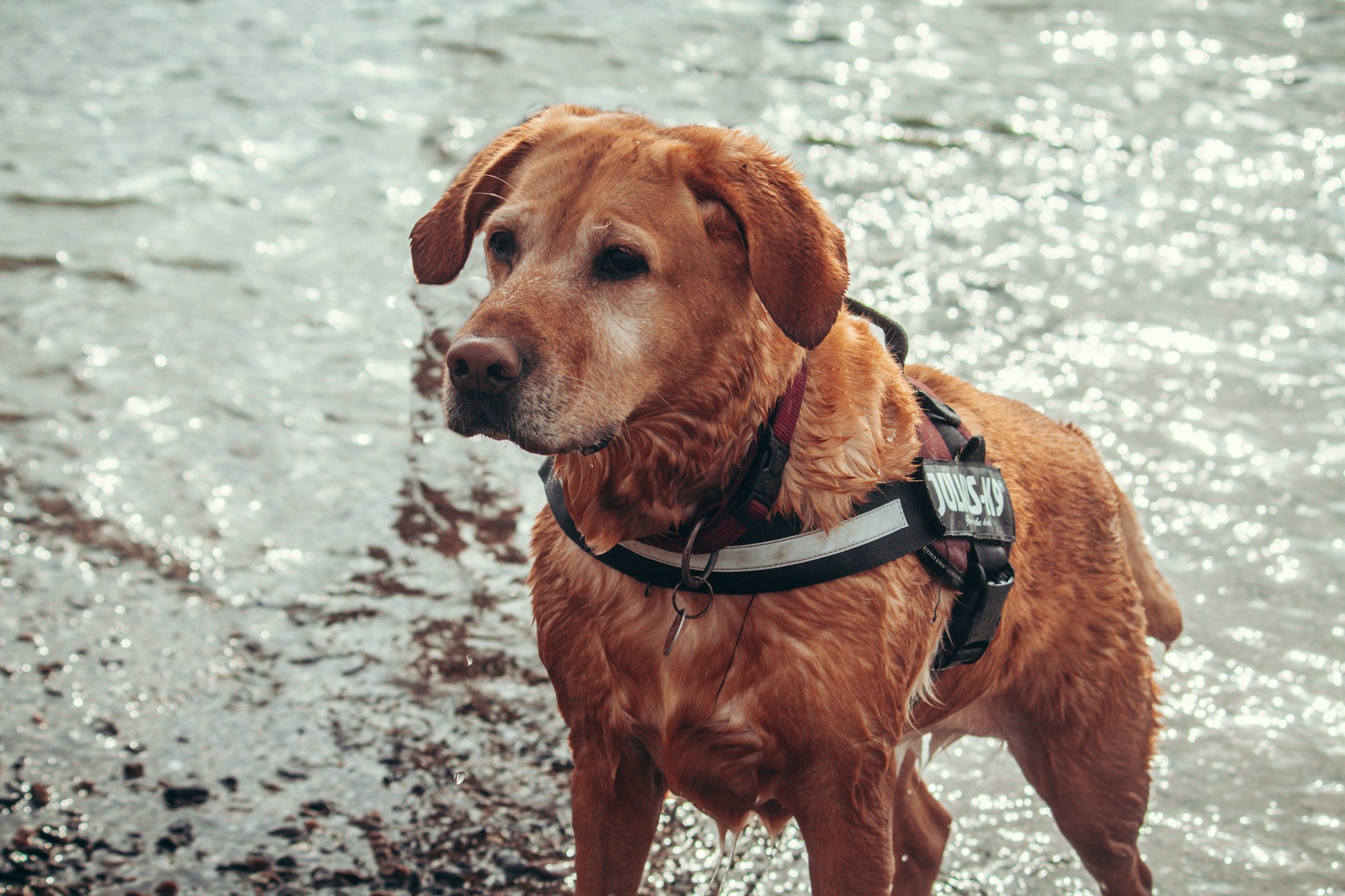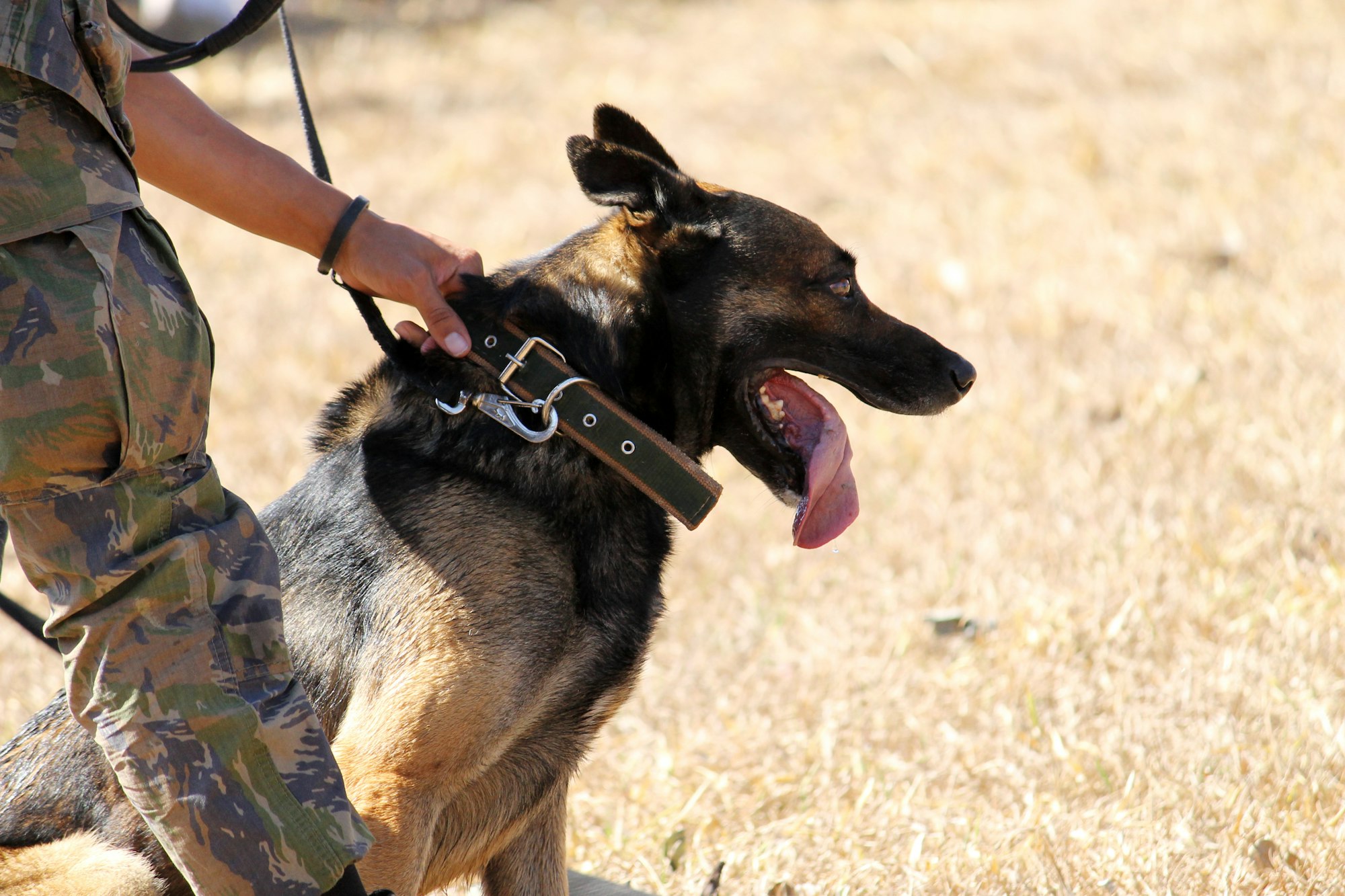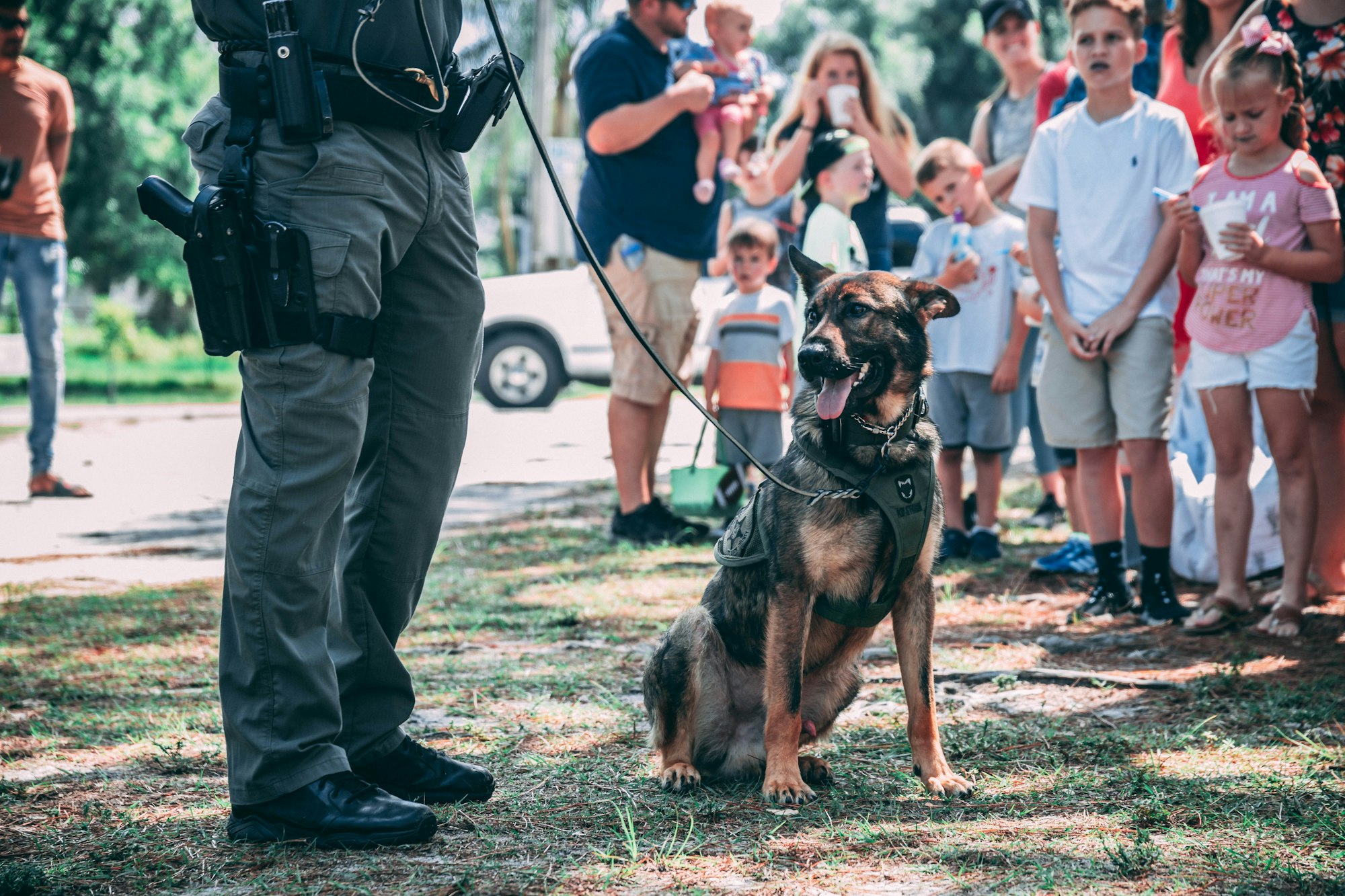Dogs, often referred to as "man's best friend," have shared an unbreakable bond with humans for centuries. This connection goes beyond companionship; it extends to instances where dogs have demonstrated incredible abilities to save lives. In this article, we delve into the fascinating question: Can dogs save people?

Historical Perspective
Dogs have been intertwined with human history for centuries, serving various roles in different cultures. In ancient civilizations, dogs played pivotal roles in hunting, protection, and companionship. In ancient Egypt, they were revered for their loyalty and believed to have protective qualities, with some even serving as symbols of certain gods.
As societies evolved, so did the roles of dogs. In ancient Rome, they were used in various capacities, from guarding homes to accompanying soldiers in battle. The loyalty and utility of dogs were recognized and celebrated across cultures.
During the Middle Ages, specific breeds were developed for specialized tasks. Herding dogs became essential for managing livestock, while others, like the mastiffs, were prized as guard dogs. The close connection between humans and dogs persisted through the ages, marking them not just as pets but as indispensable companions in the journey of human civilization.
The Science Behind It
The bond between humans and dogs is not merely anecdotal; it has a scientific foundation. Interacting with dogs has been shown to release oxytocin, a hormone associated with bonding and affection. This hormonal release contributes to the feelings of joy and connection between humans and their canine counterparts.
Moreover, the companionship of dogs has profound effects on mental health. Studies indicate that having a dog can reduce stress, separation anxietydiabetes-alert, and depression. The simple act of petting a dog can trigger a relaxation response, leading to a decrease in cortisol levels. This therapeutic aspect of the human-dog relationship extends to various settings, including homes, hospitals, and therapy sessions.
Search and Rescue Dogs
One of the most remarkable aspects of the relationship between humans and dogs is their role in search and rescue missions. Dogs, with their acute sense of smell and agility, have been invaluable in locating missing persons in diverse environments.
Search and rescue dogs undergo rigorous training to develop their skills. They can locate individuals buried under rubble, find lost hikers in vast wilderness areas hiking, and even detect human scent on water. The bond between the handler and the dog is crucial in these operations, as it enhances communication and trust, leading to more effective rescue efforts.
In times of natural disasters, such as earthquakes or hurricanes, search and rescue dogs become unsung heroes. Their ability to navigate through challenging terrain and locate individuals in distress has saved countless lives. These remarkable capabilities showcase the exceptional nature of the human-canine partnership, where dogs, with their unique skills, become instrumental in preserving human life.
Medical Assistance Dogs
The role of dogs extends beyond companionship into the realm of medical assistance, where they become vital partners for individuals with various health conditions. Medical assistance dogs are specially trained to detect changes in their owner's physiological state, offering support and even life-saving interventions.
One notable example is the training of dogs to assist individuals with epilepsy. These dogs can detect pre-seizure changes in their owner's scent or behavior and provide advance warning, allowing the person to find a safe space. Similarly, diabetes-alert dogs can sense fluctuations in blood sugar levels and alert their owners, providing an opportunity to take necessary measures.
Medical assistance dogs also aid those with mobility challenges. They can be trained to retrieve items, open doors, or even assist with balance. This level of independence significantly enhances the quality of life for individuals with disabilities.
The bond between a medical assistance dog and its owner is profound, built on trust and mutual understanding. Through their specialized training, these dogs become more than companions; they are lifelines for those facing health challenges.
Canine Heroes in Natural Disasters
Natural disasters often bring out the best in dogs, showcasing their incredible abilities in challenging environments. From earthquakes to hurricanes, dogs have proven to be indispensable members of search and rescue teams, offering hope and salvation in the midst of chaos.
The agility and acute sense of smell possessed by dogs make them ideal for navigating disaster-stricken areas. Search and rescue dogs can locate individuals trapped under debris, often in conditions where human rescuers face significant challenges.
During Hurricane Katrina, for instance, search and rescue dogs played a critical role in finding survivors. Their ability to detect human scent, even in water, led to numerous successful rescues. These canine heroes work tirelessly alongside human responders, embodying the spirit of collaboration in times of crisis.
Therapeutic Benefits
The therapeutic benefits of interacting with dogs are well-documented and extend to various aspects of human well-being. In therapeutic settings, dogs provide comfort, companionship, and emotional support.
In hospitals, therapy dogs visit patients to alleviate stress and promote healing. The calming presence of a dog can lower blood pressure and reduce anxiety, contributing to a more positive medical outcome. Additionally, therapy dogs are often employed in rehabilitation centers to assist individuals recovering from injuries or surgeries.
Police and Military Dogs

The partnership between dogs and law enforcement or the military is a testament to the versatile capabilities of these intelligent animals. Police and military dogs, often referred to as K9s, play crucial roles in maintaining public safety and security.
In law enforcement, police dogs are trained for various tasks, including tracking suspects, detecting drugs or explosives, and apprehending criminals. The keen sense of smell possessed by dogs makes them invaluable in locating hidden substances or individuals. The presence of a police dog can also act as a deterrent, contributing to the overall effectiveness of law enforcement operations.
Similarly, in the military, dogs are utilized for tasks such as patrol, search and rescue, and even in combat zones. Their agility, intelligence, and loyalty make them ideal companions for soldiers. Military dogs undergo rigorous training to perform tasks that enhance the safety and effectiveness of military operations.
The bond between a police or military dog and its handler is of paramount importance. This relationship is built on trust, communication, and mutual respect, creating a formidable team that can tackle even the most challenging situations.
Canine Intuition
The intuitive nature of dogs is a fascinating aspect of their connection with humans. Stories abound of dogs sensing danger, detecting illnesses, or responding to their owner's emotions in ways that defy conventional explanation.
For example, some dogs have been known to warn their owners of impending seizures or diabetic episodes by displaying unusual behavior. In search and rescue missions, dogs may exhibit signs of distress when they sense danger, alerting their handlers to potential risks.
While the exact mechanisms behind canine intuition are not fully understood, it is believed that dogs are highly attuned to changes in human scent, body language, and even subtle cues that escape human perception. This heightened sensitivity contributes to their ability to respond to situations with remarkable accuracy.
Training and Bonding
The effectiveness of working dogs, whether in police, military, search and rescue, or other roles, is closely tied to the training they undergo and the bond they share with their handlers. Training is a meticulous process that hones a dog's natural instincts and enhances its ability to perform specific tasks.
Handlers play a crucial role in this process, establishing clear communication and building a strong bond with their canine partners. The bond formed between a handler and a working dog is characterized by trust, loyalty, and effective teamwork. This bond is not just a professional connection; it often extends to a deep personal connection, with handlers and dogs developing a profound understanding of each other.
The training and bonding process is ongoing, with regular practice sessions reinforcing skills and maintaining the strength of the handler-dog partnership. This synergy between training and bonding ensures that working dogs can consistently perform at their best, contributing to the success of various missions and operations.
Limitations and Challenges
While dogs have proven to be incredible companions and lifesavers, it's essential to acknowledge their limitations and the challenges associated with relying on them for various tasks.
1. Environmental Constraints
- Dogs may struggle in certain environments, such as extreme weather conditions or dense urban areas, limiting their effectiveness in certain rescue scenarios.
2. Training Variability
- Not all dogs respond to training in the same way, and the effectiveness of a canine team can vary based on the individual dog's temperament and aptitude for specific tasks.
3. Human-Canine Communication
- Despite the strong bond between handlers and their dogs, communication barriers exist, particularly in high-stress situations where clear communication is crucial.
4. Specificity of Training
- Dogs are trained for specific tasks, and their effectiveness may diminish in situations outside their training scope.
5. Unpredictability of Situations
- The unpredictable nature of emergencies or disasters can pose challenges, and there may be instances where even highly trained dogs face difficulties.
Understanding these limitations is crucial for managing expectations and continuously improving training and assistance programs involving dogs.
The Future of Canine Assistance
As technology advances, so does the potential for enhancing canine assistance in various fields. The future holds exciting possibilities for the integration of technology with the natural capabilities of dogs.
1. Wearable Technology
- Dogs equipped with wearable devices can provide real-time data on vital signs, allowing handlers to monitor their health and well-being during missions.
2. Augmented Reality (AR) Integration
- AR technology could be used to enhance communication between handlers and dogs, providing visual cues or information in real-time.
3. Enhanced Training Methods
- Innovations in training methods, including virtual reality simulations, can further refine the skills of working dogs and prepare them for a wider range of scenarios.
4. Canine Health Monitoring
- Advanced monitoring systems can track the long-term health of working dogs, ensuring their well-being and extending their working lives.
5. Collaborative Robotics
- Collaboration between dogs and robots, where robots handle certain tasks, could expand the range of missions dogs can undertake.
Continued research and development will likely result in groundbreaking advancements, further establishing dogs as invaluable partners in various fields.
Heartwarming Stories
Behind the statistics and training protocols, there are countless heartwarming stories that capture the essence of the human-canine connection.
1. The Resilient Rescuer
- A search and rescue dog braved challenging conditions to locate a child trapped in the rubble after an earthquake, showcasing unwavering dedication.
2. Lifesaving Intuition
- A family dog alerted its owners to a gas leak in their home, showcasing the intuitive abilities of dogs in safeguarding their human companions.
3. Therapeutic Companionship
- A therapy dog brought joy and comfort to patients in a children's hospital, illustrating the profound impact of dogs in therapeutic settings.
4. Military Loyalty
- Stories abound of military dogs displaying unmatched loyalty, even risking their lives to protect their human comrades in the midst of conflict.
5. The Unlikely Heroes
- Ordinary dogs, in extraordinary circumstances, have shown courage and heroism, embodying the spirit of the unbreakable bond between humans and dogs.
These heartwarming stories serve as a reminder of the extraordinary contributions and unconditional love that dogs bring into the lives of people around the world.

Conclusion
In conclusion, the question "Can dogs save people?" is met with a resounding yes. From search and rescue missions to providing therapeutic support, the capabilities of dogs go beyond what words can express. The bond forged between humans and dogs transcends the ordinary, creating a partnership that is truly exceptional.
FAQs
Q1: Can any happy dog be trained to save people?
A: While most dogs can be trained for various tasks, specific breeds are often selected for specialized roles such as search and rescue or medical assistance due to their inherent traits and abilities.
Q2: Are there instances where dogs were unable to save people?
A: Yes, there are limitations to what dogs can achieve, and factors such as the environment, training, and the nature of the emergency play significant roles in their effectiveness.
Q3: How do dogs sense impending danger or health issues?
A: The exact mechanisms are not fully understood, but it's believed that dogs can detect changes in scent, behavior, and even subtle cues from their owners.
Q4: What is the difference between emotional support animals and service dogs?
A: Emotional support animals provide comfort and companionship to individuals with mental health conditions, while service dogs are trained to perform specific tasks to assist individuals with disabilities.
Q5: How can I get involved in training or working with rescue dogs?
A: Many organizations offer volunteer opportunities for training or working with rescue dogs. Contact local animal shelters, rescue organizations, or search online for relevant opportunities in your area.